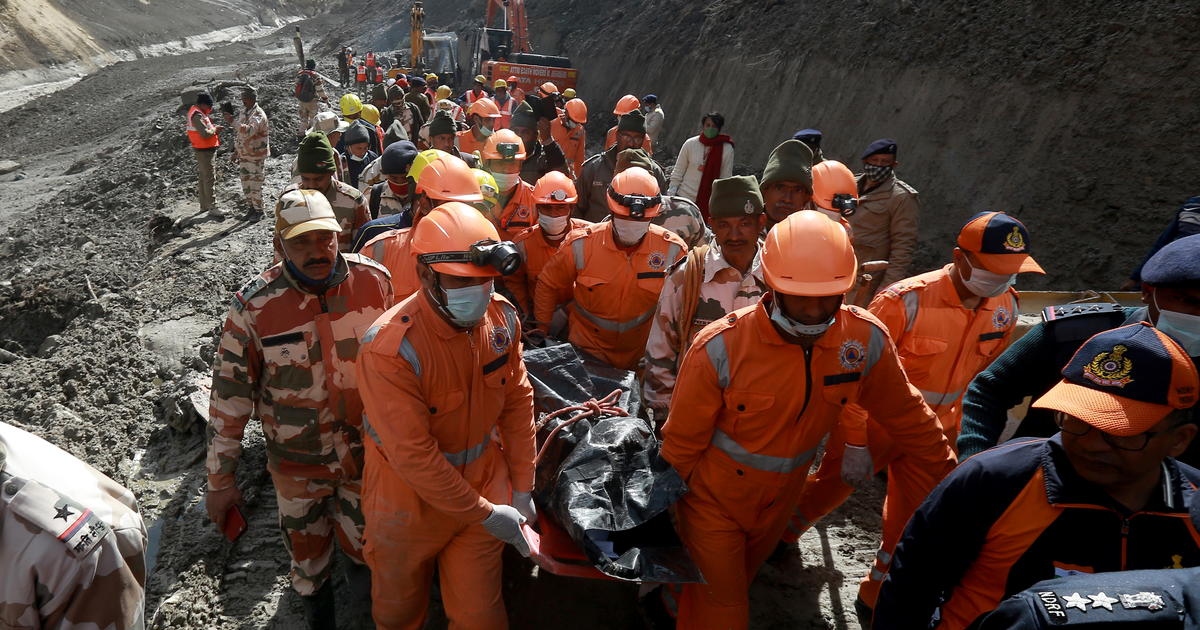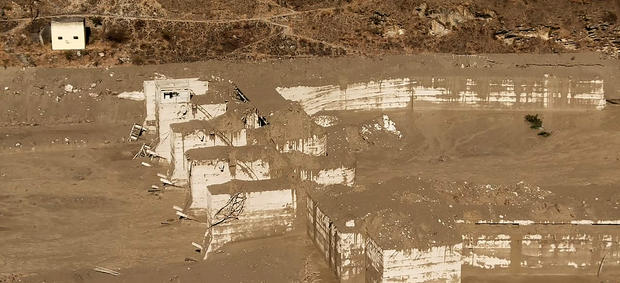Tapovan, India – Indian rescuers struggled on Tuesday to dig tons of rock and mud to reach survivors in an obstructed Himalayan tunnel after a devastating flash flood probably caused by a glacial explosion. More than 170 people were still missing two days after a wall of water and debris fell in a valley in the northern state of Uttarakhand, destroying bridges and roads, hitting two hydroelectric plants and killing 32.
The disaster was attributed to the rapid melting of glaciers in the Himalayan region, exacerbated by global warming. Indian researchers said that although it initially appeared that the collapse of a glacial lake caused the flash flood, it was probably a landslide and an avalanche that hit the glacier that triggered the waterfall in the valley.
The activity of building dams, dredging river beds to obtain sand and cutting trees for new roads – some to strengthen defense on the border with China – may also have contributed to destabilizing the area.
AP
Most of the disappeared were employees of two of the many hydroelectric plants under construction around Uttarakhand, a mountainous and ecologically fragile state slightly smaller than Switzerland.
Hundreds of rescue workers were involved in the operation across the state, using helicopters equipped with high-definition cameras that penetrate the surface, as well as sniffer dogs.
On Tuesday, the outbreak was trying to locate and extract 34 workers that rescuers hoped were still alive in air pockets in a tunnel system filled with icy water and rubble. The workers worked throughout the day and, as it got dark, the operation continued.
STRINGER / REUTERS
“We are trying to clean up the mud inside the tunnel, but it has been difficult,” said rescue officer PK Tiwari. “We are trying to use drones and other tools to get a clearer picture of the internal situation.”
Nearby, workers used heavy machinery to remove giant stones from the road that blocked the way to the second plant, where 35 people were missing.
The plant was destroyed and is now a wasteland densely covered with slimy gray mud. In a nearby village, four bodies were recovered, including that of a police officer.
Survivor stories
One who escaped was Rajesh Kumar, 28, who along with others clung to scaffolding rods in the tunnel for four hours before the water level dropped and they could escape.
“Suddenly, there was a whistling sound … screams, people telling us to get out. We thought it was a fire. We started running, but the water came in. It looked like a Hollywood movie,” Kumar told AFP.
“We keep telling each other – whatever happens, we shouldn’t let go of the rods,” he said from his hospital bed.
Shopkeeper Ramesh Negi was enjoying the Sunday morning sun when he heard a loud roar and saw a huge wall of water collide and sweep a bridge.
Dozens of riverbed workers and herdsmen leading their cattle along the mountain slopes disappeared under the sudden flood, he recalled.
“There was dust and screaming everywhere,” the 36-year-old told AFP.
Indo Tibetan Border Police / AP
Mangra, another survivor, remembers hearing a loud and thunderous sound and the screams of other colleagues: “Run, run, run!”
The 28-year-old left the tunnel, but six friends and neighbors in his village failed.
“It looked like the mountain was collapsing and the Earth was moving,” Mangra told AFP outside the tunnel, cuts and scrapes on his hands and legs.



